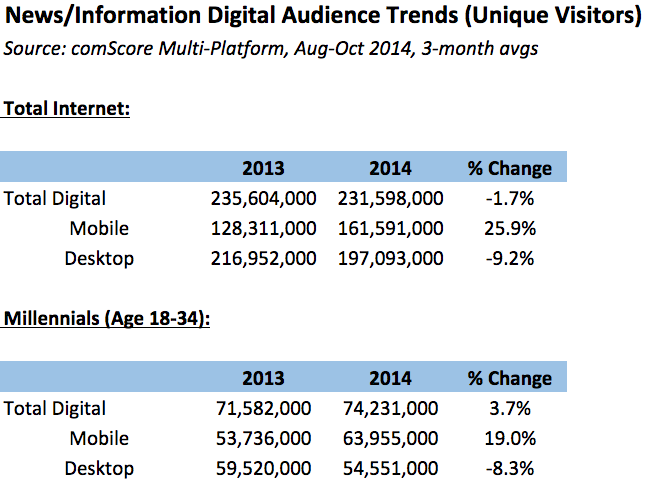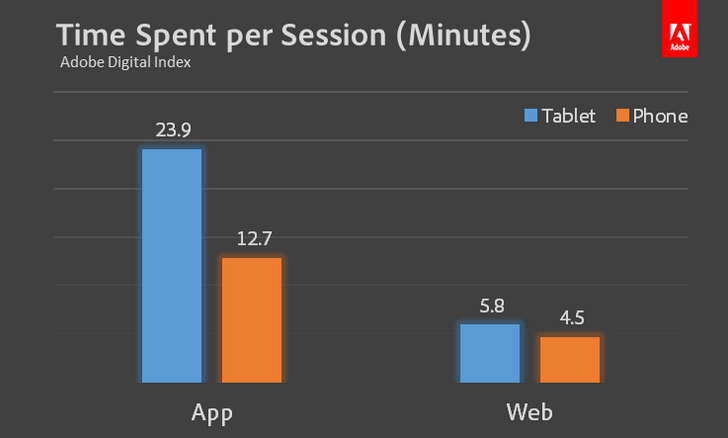You’re under pressure to grow audience, to get your newsrooms to “think more digitally,” to dazzle with innovation and to, surely and not lastly, break news and produce the best journalism your organization has ever seen. In digital news, we’ve all spent our share of time chasing the shiny new thing — that’s part of the job. You’re required to be in the moment, with the story or with the latest trend to draws users in. Sometimes things align and you can do both. Then the landscape shifts under your feet again. There exists a collective exhaustion across all journo Twitter; you’re burning out and you’ve really just started.
 Behold the promise of 2015: The year of the reader. The year news organizations will rightly put a premium on their most engaged users. And the year you get to focus on excellence.
Behold the promise of 2015: The year of the reader. The year news organizations will rightly put a premium on their most engaged users. And the year you get to focus on excellence.
Why? Well, the audiences are here:
- People are reading lots of news…on their phones. Mobile traffic is up dramatically across news organizations. And that growth seems to be increasing overall news consumption.
-
Young people are reading more mobile news. The year-over-year growth for 18- to 34-year-olds is up in a big way.

-
Native products = highly engaged users. Native app users are spending over twice the amount of time as web users and generally consuming many more pieces of content.

- Users will pay for something they value — either with their time or with their money. Digital subscriptions are growing and in place at over 500 newspaper websites in the U.S.
With the massive growth of mobile news readers, highly engaged audiences, and willing subscribers, there’s reason to be excited about the now and the future of news. So how will media companies apply some of these shifts? Below are a few thoughts. And if I’m wrong? It will only mean delivering excellent digital journalism to our most loyal readers.
- You want people to come back. Purely chasing pageviews is a fool’s errand. In the short term, it gets you a bigger comScore number. But those calories are empty. Readers come back because they value what happened when they were there last. Give them two things: Good content and good experience. You need that combination to grow user loyalty.
- Learn to strongly dislike any experience that detracts from your stories. Put someone in charge of ridding your products of any obstacles to consuming journalism. Or at least put someone in charge of doing an audit, and then prioritizing anything that helps users over those that turn them away.
- Pick your key products, then present your best journalism on them. You can’t dominate on every single platform with finite resources. You must select your key targets, the platforms your most loyal audiences consume you on, and then build the best experience you possibly can to serve up your work. (See above on apps.)
- Get your mobile house in order, stat. Mobile growth is stunning. But a one-size-fits-all approach to handle all content can hurt us on these growing platforms. I’ve heard more than a few cases of responsive design killed my mobile engagement numbers. You suddenly have more readers on mobile than on your desktop — but what about the rest of the key metrics? Time on site. Pages per visit. Return visits. If those numbers drop as your visitors increase, it’s time to question whether the overall experience works. Remember, the biggest growth in young audiences — which are also new audiences — is in mobile.
The only thing we should be chasing in 2015 is news. Readers are here, especially on the phone. The challenge is to engage them even further. This is a fantastic journalistic opportunity, one that is different than begging them to come once. If we do what we love, journalism and the creation of excellent experiences to deliver that, the signs point to these readers sticking around for more. So let’s give them our best. They deserve it, and so do we.
Cory Haik is executive producer and senior editor for digital news at The Washington Post.
 Behold the promise of 2015: The year of the reader. The year news organizations will rightly put a premium on their most engaged users. And the year you get to focus on excellence.
Behold the promise of 2015: The year of the reader. The year news organizations will rightly put a premium on their most engaged users. And the year you get to focus on excellence. 
